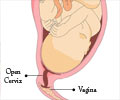A rare central nervous system disorder known as neuromyelitis optica may increase pregnant women's risk for pre-eclampsia and miscarriage.

In the new research, Dr. Maria Isabel Leite and her research team at the University of Oxford analyzed the medical records of as many as 60 pregnant women with neuromyelitis optica who'd had at least one previous pregnancy.
Of the participants, 40 women were examined for miscarriage and 57 for pre-eclampsia.
In the 40 women analyzed for miscarriage, there were 85 pregnancies. Researchers found that 11 pregnancies in six of the women (roughly 13%) ended in miscarriage, a rate similar to that in the general population.
"Six of the 14 pregnancies (roughly 43%) that occurred after the disease started ended in miscarriage. Pregnancies conceived up to three years before disease onset were nearly 12 times as likely to end in miscarriage, regardless of the mother's age or history of miscarriage. Women whose pregnancies ended in miscarriage after or up to one year before the disease began also had more disease activity from nine months prior to conception to the end of pregnancy, compared to viable pregnancies," the researchers reported.
Women with the rare disorder have a high risk of miscarriage, particularly in pregnancies occurring within the three years prior to the disease starts and after the disease begins. This is why some of these women may not even know they are going to have the disorder at the time of miscarriage.
Also, the disorder needs to be diagnosed as early as possible so that immunosuppressive therapy can be started. There are many immunosuppressive drugs available that are thought to be safe for pregnant women including cyclosporine and azathioprine. Once diagnosed, women should plan their pregnancies better and ensure they are taking the best medications.
The study was published in the journal Neurology.
What is Neuromyelitis Optica?
Neuromyelitis Optica (NMO) affects the optic nerves and spinal cord. Individuals with NMO develop optic neuritis and transverse myelitis. Optic neuritis causes pain in the eye and vision loss. Transverse myelitis causes weakness, numbness, and sometimes paralysis of the legs and arms, along with sensory disturbances and loss of bowel and bladder control. NMO leads to loss of myelin a mixture of proteins and phospholipids forming a whitish insulating sheath around many nerve fibers that helps nerve signals move from cell to cell. The disorder can also damage nerve fibers and leave areas of broken-down tissue. In the disease process of neuromyelitis optica, cells in the immune system and antibodies destroy myelin cells in the optic nerves and the spinal cord.
Usually, NMO was diagnosed in people who experienced a rapid onset of blindness in one or both eyes. Most people with the syndrome suffer clusters of attacks months or years apart, followed by partial recovery during periods of remission. This relapsing form of NMO (deterioration after a period of improvement) primarily affects women. Another form of the disorder is most likely a distinct disease that hits men and women with equal frequency.
What is the Prognosis?
Most people with the disorder have an unpredictable course of disease with attacks occurring months or years apart. Disability is cumulative, the outcome of each attack is an injury to new areas of myelin. Some people are severely affected by the disorder and can lose vision in both eyes. Most people suffer a moderate degree of permanent limb weakness from myelitis. Muscle weakness can cause breathing issues and may require the use of artificial ventilation. The death of an individual with the disorder is most often caused by respiratory difficulties from myelitis attacks.
Is There Any Treatment For Neuromyelitis Optica?
There is no cure for NMO. However, there are therapies to treat an attack while it is happening. These therapies prevent relapses. Mycophenolate mofetil (CellCept), rituximab (Rituxan), and azathioprine (Imuran) are the three therapies used in the U.S to treat neuromyelitis optica
References:
1. Ref: Matthew M. Nour, BM, Bch, Ichiro Nakashima, MD, Ph.D., Maria Isabel Leite, MD, DPhil
doi: http://dx.doi.org/10.1212/WNL.0000000000002208
2. http://www.ninds.nih.gov/disorders/neuromyelitis_optica/neuromyelitis_optica.htm
Source-Medindia











